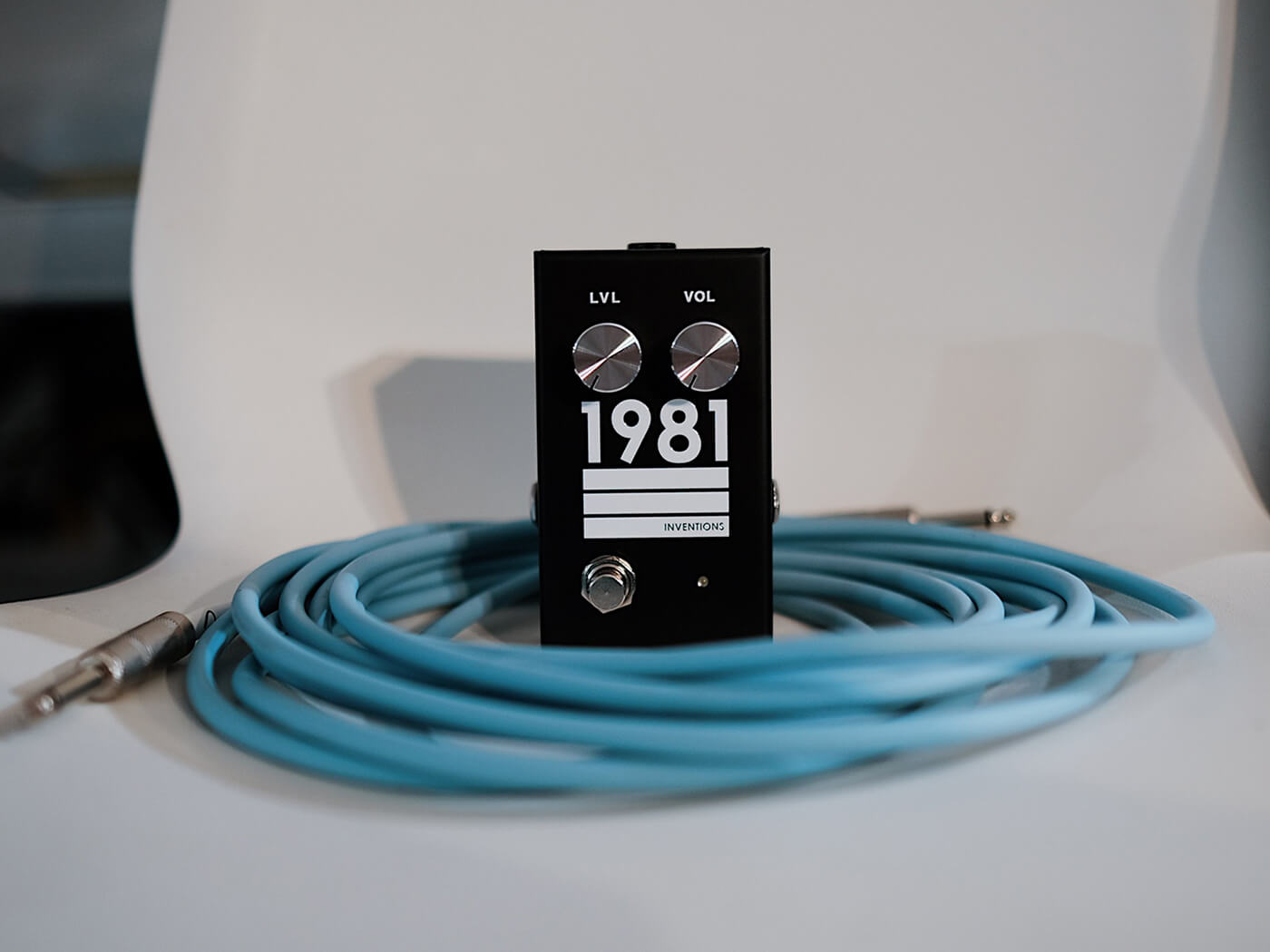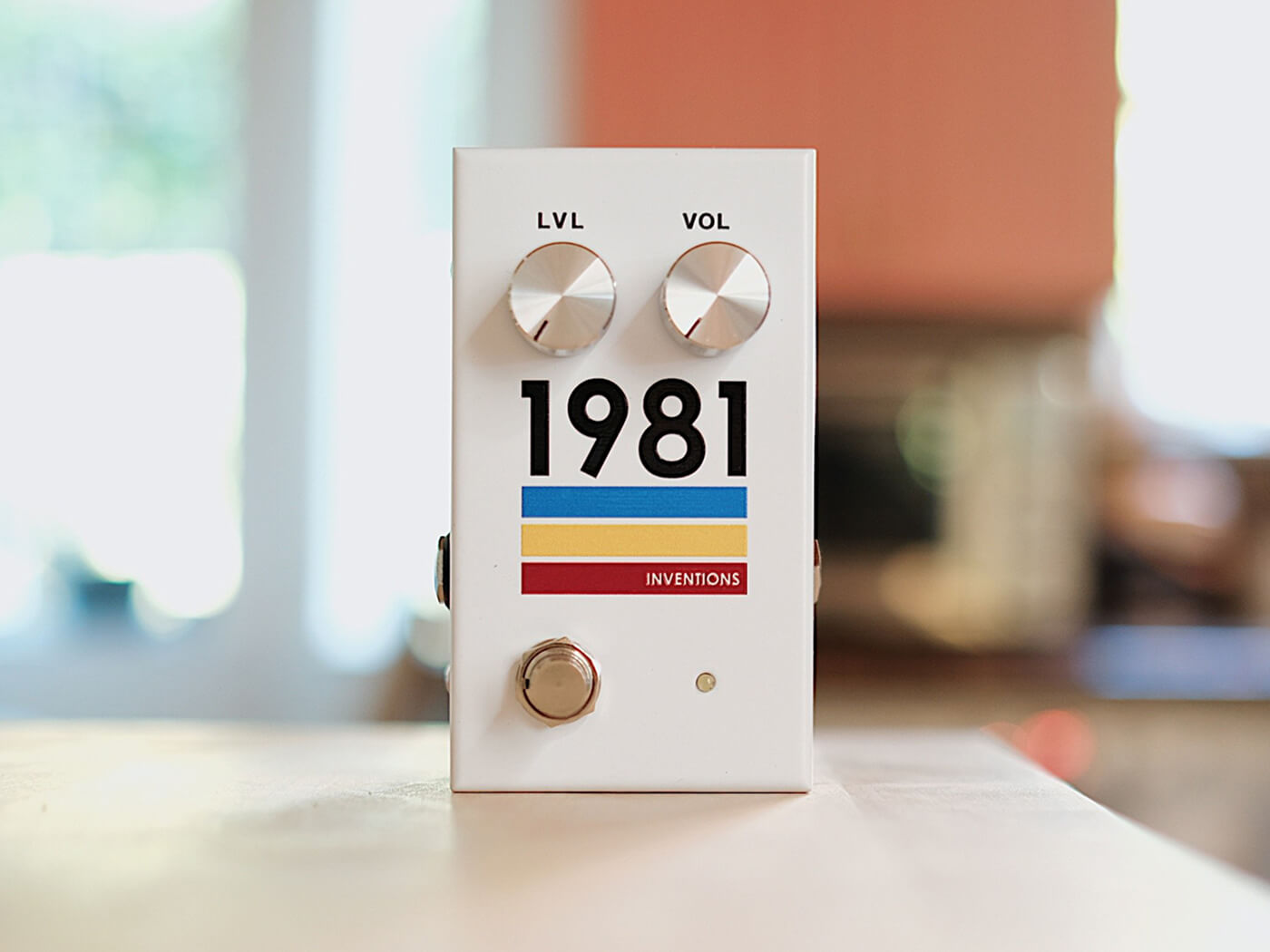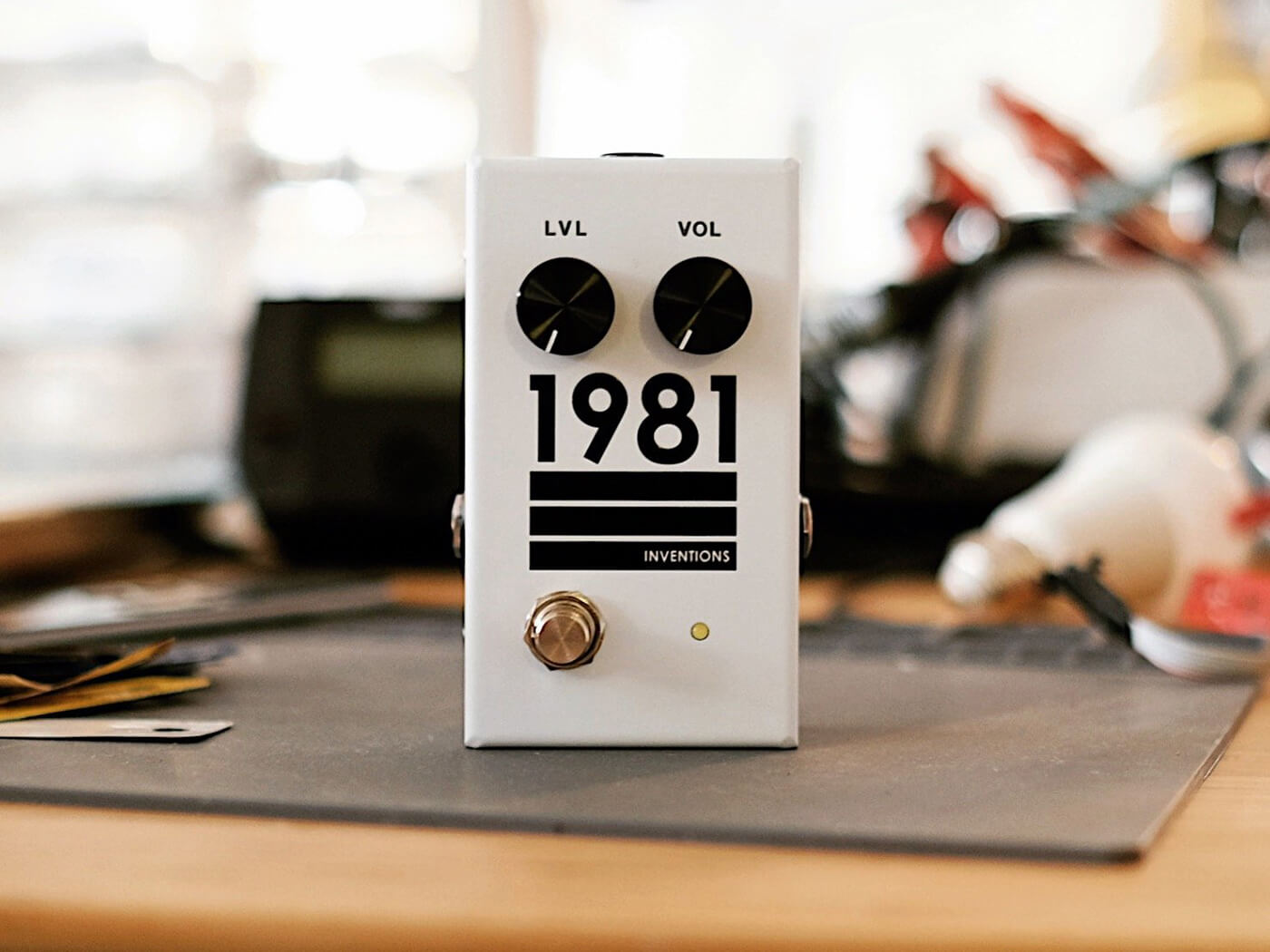1981 Inventions LVL review – the ultimate gain-stacker?
Matthew Hoopes broke the pedal internet with his first creation back in 2019… can he repeat the trick four years later?

1981 Inventions LVL. Image: 1981 Inventions
Review Overview
Our rating
10
Our verdict
In a vastly over-saturated market of Klones, Tube Screamer copies, and RATs, the 1981 Inventions DRV came along in 2019 and instantly became the most hyped pedal of the year – maybe of the decade. Creator Matthew Hoopes (in collaboration with Bondi Effects maestro Jon Ashley) delivered one of the best distortion pedals of recent years by offering a unique take on a familiar circuit, and instantly became a modern classic. In fact, outside of Bill Finnegan’s Klon Centaur (and KTR) you could argue that no drive pedal has provoked such strong emotion as the DRV – and with good reason, we gave it a rare perfect score when we checked it out in 2019.
The DRV has since become a staple of pedalboards the world over, while new drops sell out almost instantly, but how do you follow up an unprecedented hit? Well for that you can go back to our interview with Hoopes in 2019, not long after the DRV began popping off, where he explained that he was working on “a vintage-based preamp pedal, which is a type of pedal that I am completely obsessed with”. Enter, four years later, the LVL.

The LVL is, according to Hoopes, a “professional low-gain device” which in practice is an entirely new pedal design that straddles the worlds of both preamps and low-gain overdrives. Designed in collaboration with John Snyder of Electronic Audio Experiments, the circuit uses a combination of light clipping and op-amp to achieve what the blurb claims is a unique sonic signature that can take you from a heavy boost to a mild overdrive, which is a small but pretty powerful scope of tones.
The look of this pedal will be familiar to anyone who has seen a DRV before, with no model designation, just the company logo on a chassis that is roughly two thirds as wide as the DRV. The 1981 Inventions design language is probably the most understatedly perfect piece of livery in modern guitar, so we absolutely don’t mind Hoopes carrying it on for the LVL.
One of the things that made the DRV such a hit on Instagram was the frequent limited-edition colourway runs he released, and while he claims that his initial goal for the LVL was to make a pedal that was “not about hype or pretty colours”, he clearly can’t help himself; the LVL is already available in three different get-ups with the initial black/white drop, a limited edition ‘stormtrooper’ white/black option, a white with tri-colour logo edition ‘no3’ edition that apes what became the default and most beloved look of the DRV, and most recently black and white versions of 1981’s popular and extremely 80s ‘Hyperfade’ pink-blue scheme. Choose your fighter!
If the DRV was simple with its three knobs, the LVL takes minimalism even further, with just two: LVL and VOL. While LVL serves as a gain control, VOL does what you’d expect, serving as a master volume for the pedal.

In Use
To put this pedal through its paces, I pick up my trusty Fender Vintera ’60s Jaguar for the single-coil jangle, and a PRS SE McCarty 594 for more of the thick humbucker drive tones. I plug them both into a Fender ’65 Deluxe Reverb Reissue.
One of the things that people loved about the DRV was the remarkable sonic power hidden within those three simple knobs, and the way they interacted with each other. With my Jaguar in hand, the LVL knob inspires a similar sense of awe; it’s remarkable how with just the slightest turn you can hear the sound transforming from a single-coil boost to a more overdriven jangle. As an opening salvo, it’s a potent display of what the LVL is capable of. Turn the knob all the way up and your ears are greeted with a sound that can broadly be described as How Soon Is Now sans the tremolo.
With a hotter set of pickups, you’d expect a more robust palette of driven tones, but when I switch to the PRS, it’s remarkable just how much gain this pedal has on tap – even with the knob barely at the four o’clock position. One of the hallmarks of the DRV was how well the pedal retained note definition as you wound up the gain, and it’s a trick repeated on the LVL to inspiring effect.

Digging in with a heavier pick attack offers a nice change of pace that finds me indulging in chunky, gain-filled rhythm sounds that channels my mid-2000s post-hardcore roots, and bands like Underoath. Did we say this was supposed to be a low-gain drive?
Drive stacking is the secret sauce that many a guitarist has discovered opens up hitherto unimagined worlds of tonal bliss, and the LVL might well be the gain-stacker’s dream – offering as it does everything from a polite clean boost to more raucous drive tones, allowing you to get your balance just so. I put it in front of my Klon KTR and find it blurs the line between edge of breakup and full-on overdrive even more than normal – but in the best way possible. The distorted highs retain definition, even at high volumes, while the low end comes across even thicker. In fact, as great as it sounds on its own, the LVL is at its very best when accenting other dirt boxes, doing a wonderful job of accentuating and highlighting each one’s unique tonal characteristics.
The LVL is a more than worthy follow up to the DRV, and like many of the best sequels, it takes the heart of what came before it and takes things in a bold new direction. Once again, the hype is real and deservedly so! This is the drive pedal that you never knew you were looking for.
$239/£239, 1981inventions.com




